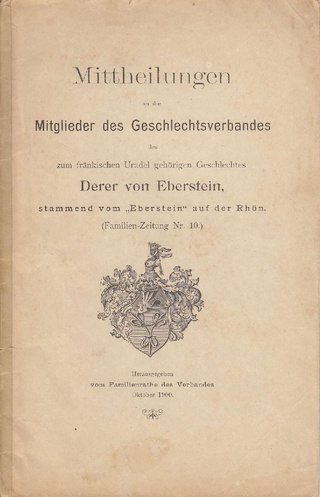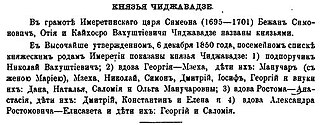
Uradel is a genealogical term introduced in late 18th-century Germany to distinguish those families whose noble rank can be traced to the 14th century or earlier. The word stands opposed to Briefadel, a term used for titles of nobility created in the early modern period or modern history by letters patent. Since the earliest known such letters were issued in the 14th century, those knightly families in northern European nobility whose noble rank predates these are designated Uradel.
Cyril Leo Toumanoff was a Georgian-American historian, and academic genealogist who mostly specialized in the history and genealogies of medieval Georgia, Armenia, Iran, and the Byzantine Empire. Born in the Russian Empire into a princely family, Toumanoff escaped to the United States after the Russian Revolution. His works have significantly influenced the Western scholarship of the medieval Caucasus.

The House of Amilakhvari was a noble house of Georgia which rose to prominence in the fifteenth century and held a large fiefdom in central Georgia until the Imperial Russian annexation of the country in 1801. They were hereditary marshals (amilakhvar/amilakhor) of Georgia from c. 1433, from which the family takes its name. Subsequently, the family was received among the princes (knyaz) of the Empire under the name of Amilakhvarov and Amilakhvari. Till the 17th century their family residence was in Skhvilo castle, when they moved to Kvemo Chala castle.

The House of Tarkhan-Mouravi is a Georgian noble family, claiming descent from the Shamkhal dynasty of Tarki, in Dagestan. Originally known as Saakadze (სააკაძე), they acquired, in the 1640s, the title of prince (tavadi) and the new surname, which is a composite of the two hereditary offices, mouravi and tarkhan. The family was reconfirmed as the princes (knyaz) by the Russian Empire in 1826 and 1850. The cadets continued to be called Saakadze and remained members of the untitled nobility (aznauri) until 1881 when they were also elevated to the princely rank.
Aznauri was a class of Georgian nobility.

The House of Gelovani is a Georgian princely family from the lower part of the mountainous province of Svaneti – formerly rulers of Svaneti.

Tavadi was a feudal title in Georgia first applied in the Late Middle Ages usually translated in English as Prince and Duke. The title was designated for dynastic princes who were heads of families, akin to mtavari who had a higher standing.

The House of Chkhetidze was a Georgian noble family known in west Georgia from the tenth century. The oldest known representative is Germain Chkhetidze, Archbishop-Metropolitan of Bedia in 999.
The House of Mkheidze, originally Mkhetsidze (მხეციძე), also Pkheidze (ფხეიძე), Kheidze (ხეიძე), Mkhetsia (მხეცია), and Khetsia (ხეცია), is a Georgian noble family, known from the eighth century. This house, centered at the western district of Argveti, has survived to the end of the Georgian kingdoms and the Russian Empire which granted them recognition of their princely title in 1850.

The House of Orbeliani was a Georgian noble family (tavadi), which branched off the House of Baratashvili in the 17th century and later produced several lines variously called Orbeliani, Orbelishvili (ორბელიშვილი), Qaplanishvili (ყაფლანიშვილი), and Jambakur(ian)-Orbeliani (ჯამბაკურ[იან]-ორბელიანი). They were prominent in Georgia's politics, culture, and science; remained so under the Russian rule in the 19th century – when most of the Orbeliani lines were received among the princely nobility (knyaz) of the Russian Empire – and into the 20th century.

Georgian feudalism, or patronkmoba, as the system of personal dependence or vassalage in ancient and medieval Georgia is referred to, arose from a tribal-dynastic organization of society upon which was imposed, by royal authority, an official hierarchy of regional governors, local officials and subordinates. It is thought to have its roots into the ancient Georgian, or Iberian, society of Hellenistic period.

The House of Palavandishvili is a Georgian aristocratic family, known from the 12th/13th century and received among the princely nobility of Imperial Russia as Princes Palavandov in the 19th century.

The Duchy of Aragvi was an important fiefdom in medieval and early modern Georgia, strategically located in the upper Aragvi valley, in the foothills of the eastern Greater Caucasus crest, and ruled by a succession of eristavi ("dukes") from c. 1380 until being transferred to the royal crown in 1747.

The House of Sidamoni was a noble family (tavadi) in Georgia, their principal line known as Aragvis Eristavi by virtue of being eristavi (“dukes”) of Aragvi from 1578 to 1743. They were also known as Sidamonidze (სიდამონიძე), Sidamonishvili (სიდამონიშვილი), and Sidamon-Eristavi (სიდამონ-ერისთავი). The family produced several important figures in Georgian politics, culture, and science.

The House of Chijavadze or Chizhavadze (ჩიჟავაძე) were a Georgian noble family (tavadi), prominent in the western Kingdom of Imereti in the 16th and 17th centuries.

The House of Guriis Eristavi or Eristavi of Guria, was a Georgian noble family, a branch of the Shervashidze, dynasts in Abkhazia. Initially in the XV century, during the reign of House of Gurieli, the position was held by the noble family of Gugunava and in the XVI century – House of Kobaladze. Throughout the XVII century, the office was supervised by Tavadi Giorgi Sharvashidze, brother-in-law of Mamia III Gurieli. Giorgi and his posterity received the feudal domains with monasteries of Gomaghali and Erketi and Satavado (county) lands of Sajavakho that before was belonged to House of Chiladze. Thus, their surname derives from the title of eristavi ("duke") and in the 18th century, the family bore the name Eristavi-Sharvashidze (ერისთავი-შერვაშიძე). On December 6, 1850, the family was received among the princely nobility of the Russian Empire as knyaz Eristov-Guriisky.
Satavado, same as county, was a large feudal landholder and feudal hierarchy-political unit in the 15th-18th centuries in Georgia. Satavados were established in times of political and economical overthrow of Georgian Kingdom, by exploitation peasants and grooving immunity of feudal lords when they formed a new class of Tavadi (prince) / (duke). The Tavadi were one of the highest ranks of Georgian nobility, second only to the Royal Families of Georgia. The title of Tavadi is equivalent to the European titles of prince and duke. There are various ranks of princes in Georgian history. Other ranks include Mtavari and Eristavi

The House of Ratishvili are a Georgian noble family. They had the status of prince (tavadi) in the kingdom of Kartli and they were confirmed in their rank in the Russian Empire as princes (knyaz) Ratiev in 1825.

The House of Robitashvili is a Georgian noble family, which also belonged to the Russian nobility.

The House of Turkestanishvili or Turkistanishvili (თურქისტანიშვილი), was a noble family with origin in the eastern Georgian region of Kartli who branched out in the 18th century in the Russian Empire, where, as part of the Russian nobility they came to be known as Turkistanov and then as Turkestanov (Туркестанов).



















